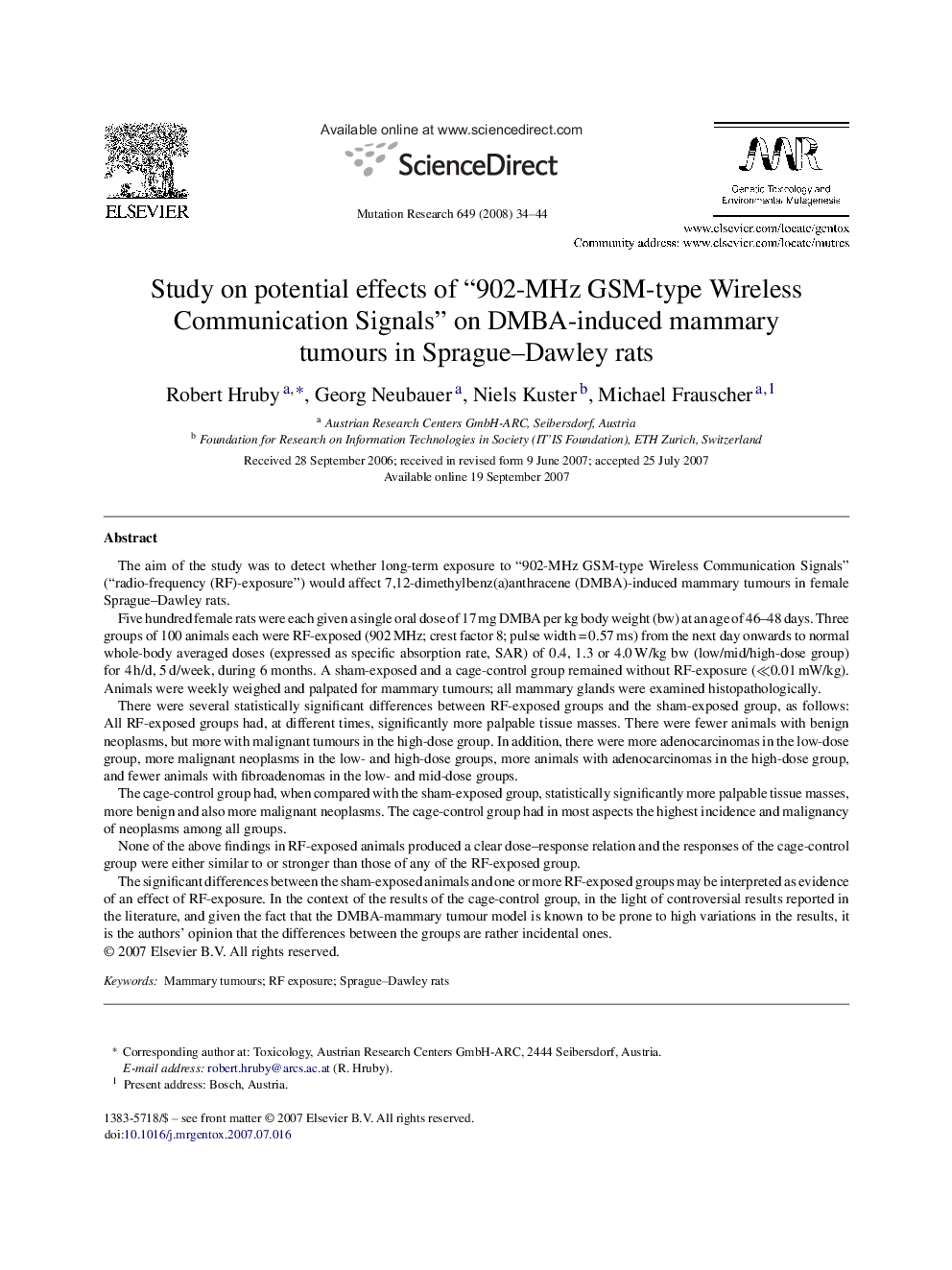| کد مقاله | کد نشریه | سال انتشار | مقاله انگلیسی | نسخه تمام متن |
|---|---|---|---|---|
| 2149090 | 1548637 | 2008 | 11 صفحه PDF | دانلود رایگان |

The aim of the study was to detect whether long-term exposure to “902-MHz GSM-type Wireless Communication Signals” (“radio-frequency (RF)-exposure”) would affect 7,12-dimethylbenz(a)anthracene (DMBA)-induced mammary tumours in female Sprague–Dawley rats.Five hundred female rats were each given a single oral dose of 17 mg DMBA per kg body weight (bw) at an age of 46–48 days. Three groups of 100 animals each were RF-exposed (902 MHz; crest factor 8; pulse width = 0.57 ms) from the next day onwards to normal whole-body averaged doses (expressed as specific absorption rate, SAR) of 0.4, 1.3 or 4.0 W/kg bw (low/mid/high-dose group) for 4 h/d, 5 d/week, during 6 months. A sham-exposed and a cage-control group remained without RF-exposure (≪0.01 mW/kg). Animals were weekly weighed and palpated for mammary tumours; all mammary glands were examined histopathologically.There were several statistically significant differences between RF-exposed groups and the sham-exposed group, as follows: All RF-exposed groups had, at different times, significantly more palpable tissue masses. There were fewer animals with benign neoplasms, but more with malignant tumours in the high-dose group. In addition, there were more adenocarcinomas in the low-dose group, more malignant neoplasms in the low- and high-dose groups, more animals with adenocarcinomas in the high-dose group, and fewer animals with fibroadenomas in the low- and mid-dose groups.The cage-control group had, when compared with the sham-exposed group, statistically significantly more palpable tissue masses, more benign and also more malignant neoplasms. The cage-control group had in most aspects the highest incidence and malignancy of neoplasms among all groups.None of the above findings in RF-exposed animals produced a clear dose–response relation and the responses of the cage-control group were either similar to or stronger than those of any of the RF-exposed group.The significant differences between the sham-exposed animals and one or more RF-exposed groups may be interpreted as evidence of an effect of RF-exposure. In the context of the results of the cage-control group, in the light of controversial results reported in the literature, and given the fact that the DMBA-mammary tumour model is known to be prone to high variations in the results, it is the authors’ opinion that the differences between the groups are rather incidental ones.
Journal: Mutation Research/Genetic Toxicology and Environmental Mutagenesis - Volume 649, Issues 1–2, 8 January 2008, Pages 34–44